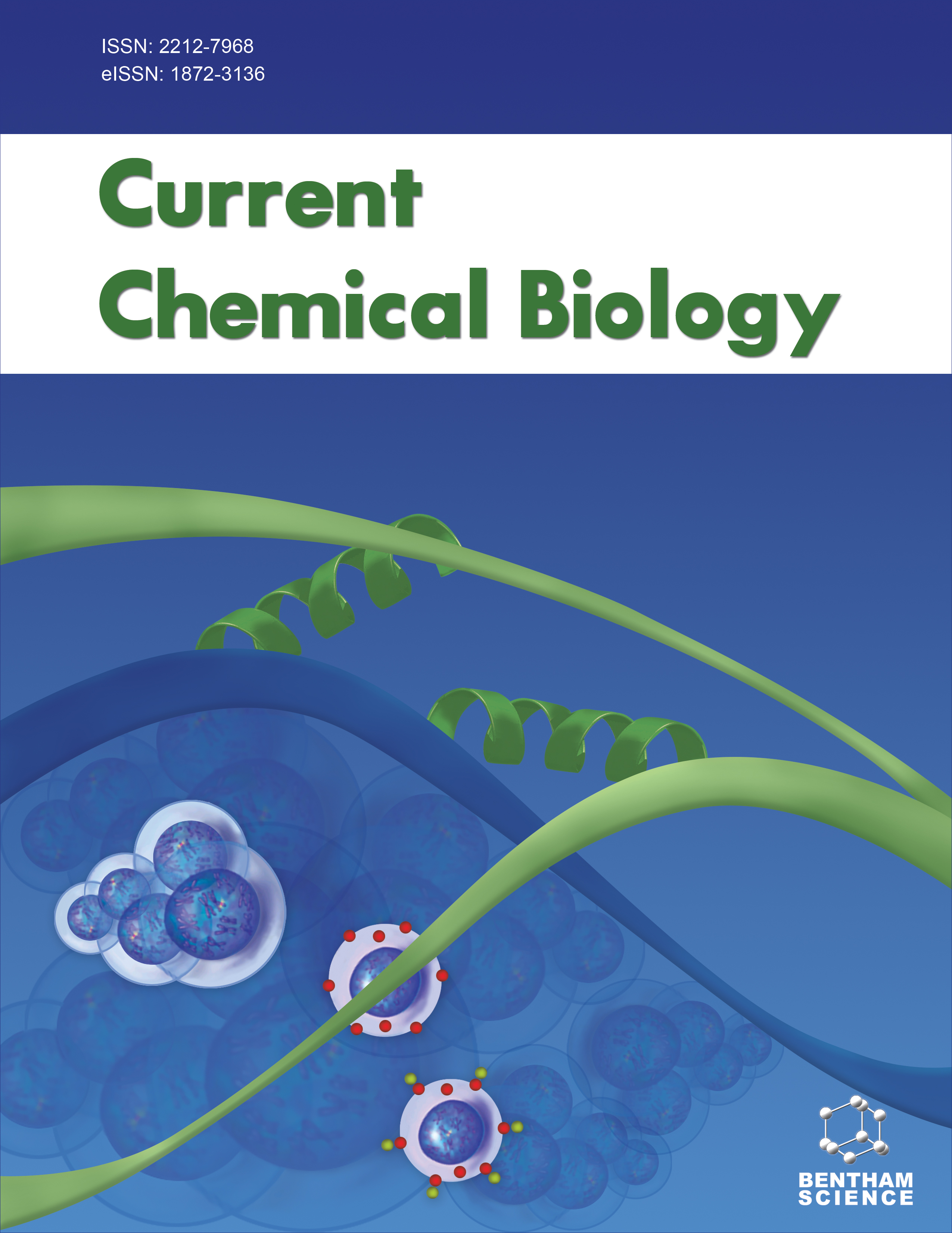- Home
- A-Z Publications
- Current Chemical Biology
- Previous Issues
- Volume 8, Issue 2, 2014
Current Chemical Biology - Volume 8, Issue 2, 2014
Volume 8, Issue 2, 2014
-
-
Snake Venom Metalloproteinases: Structure, Mechanism and Induced Diseases
More LessAuthors: Atul Kaushik, Anghesom Ambesajir and Jeevan J. KaushikSnake toxins consist of different pharmacologically lively peptides and proteins. These hemorrhagic proteins are metalloproteinases with molecular weights between 20 to 100 kDa. SVMPs are zinc-dependent types and with a multidomain association. SVMPs consist of only the proteinase type of domain, while some contain other types such as cysteine, lectin and disintegrins. They are analogous with both MMP and ADAMs group. Read More
-
-
-
Plant Glutathione Transferases: Structure, Antioxidant Catalytic Function and in planta Protective Role in Biotic and Abiotic Stress
More LessPlant cytosolic glutathione transferases (GSTs) belong to an ancient enzyme superfamily with multiple and diverse functions which are important in counteracting biotic and abiotic stress. GSTs catalyze the conjugation of xenobiotics and endogenous electrophilic compounds with glutathione (GSH), leading to their detoxification. GSTs not only catalyze detoxification reactions but they are also involved in GSH-dependent isomer Read More
-
-
-
The Role of Maternal Serum Biomarkers in the Early Diagnosis of Ectopic Pregnancy
More LessAuthors: Cheryl Phua, Shannon Reid and George CondousApproximately 8 to 14 % of women diagnosed with a pregnancy of unknown location (PUL) at their first ultrasound are subsequently found to have an ectopic pregnancy (EP). EP is the leading cause of maternal mortality in the first trimester and therefore the diagnosis of EP without delay in women with a PUL is important in the prevention of the serious complications associated with this condition. However, follow up for wom Read More
-
-
-
Using Copper to Improve the Well-Being of the Skin
More LessBy Gadi BorkowCopper has two key properties that are being exploited in consumer and medical device products in the last decade. On the one hand, copper has potent biocidal properties. On the other hand, copper is involved in numerous physiological and metabolic processes critical for the appropriate functioning of almost all tissues in the human body. In the skin, copper is involved in the synthesis and stabilization of extracellular matri Read More
-
-
-
Enzymatic Hydrolysis of Softwood and Hardwood Regenerated Celluloses
More LessAuthors: Nicolas Jacquet, Guillaume Maniet, Aurore Richel and Michel PaquotRegenerated celluloses from Kraft wood pulps (from hardwoods and softwoods) were hydrolysed by means of cellulase of Trichoderma reesei. Our results highlighted that a 75% hydrolysis yield was reached for hardwood regenerated cellulose (HRC) and 90% for softwood regenerated cellulose (SRC). Crystallinity indices from X-Ray diffraction patterns were used to measure hydrolysis rate of crystalline and amorphous regions. A Read More
-
-
-
Synthesis of Dehydrodipeptide and N-ethyl-dehydrodipeptide Derivatives with an αAminoisobutyric Acid Residue
More LessAuthors: LuIs S. Monteiro, Silvia M.M.A. Pereira-Lima and Sofia PereiraSeveral dipeptides with an N-benzyloxycarbonyl or an N-(tert-butyloxycarbonyl) α-aminoisobutyric acid residue and a β-hydroxyamino acid methyl ester were subjected to dehydration to form dehydrodipeptide derivatives. N-Ethylation of these dipeptides using triethyloxonium tetrafluoroborate with potassium tert-butoxide as auxiliary base led to complex mixtures that failed to render pure products. However, when the 4-nitroph Read More
-
Volumes & issues
Most Read This Month
Article
content/journals/ccb
Journal
10
5
false
en


